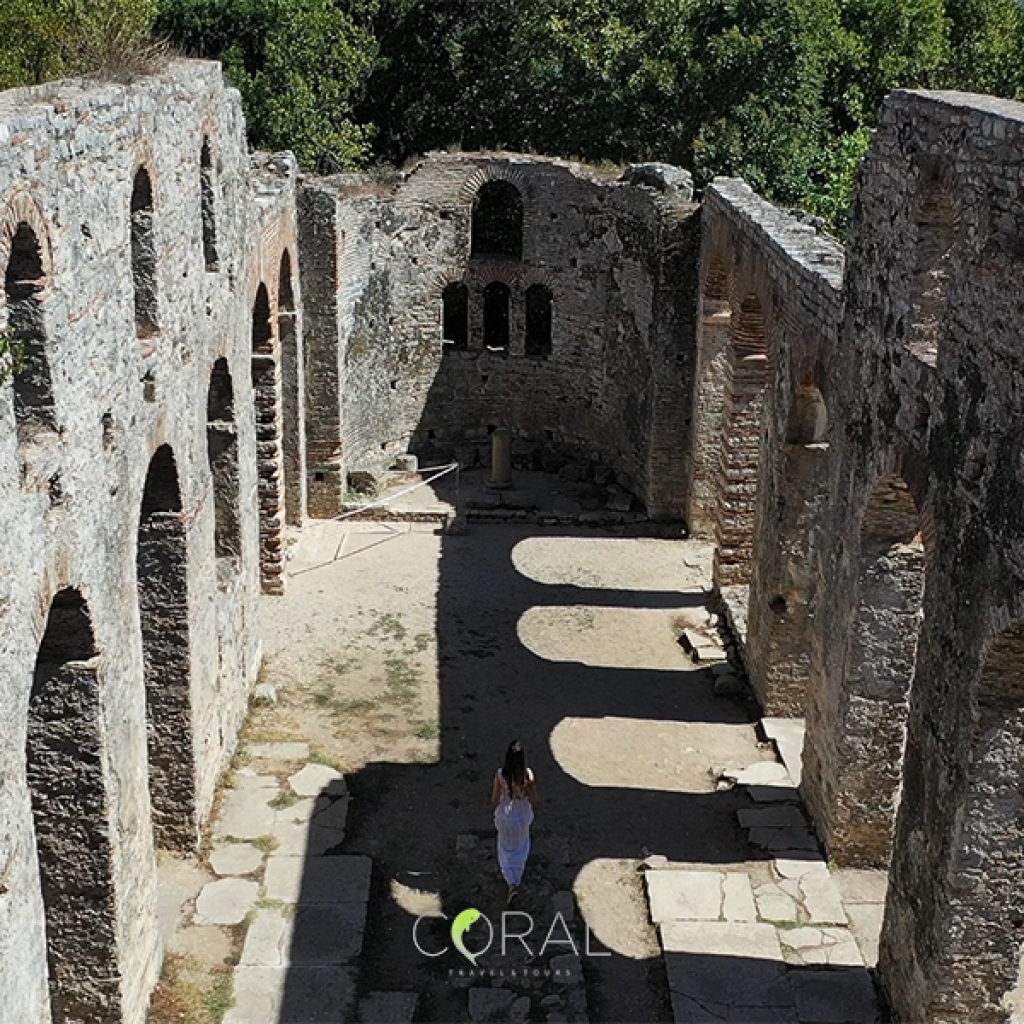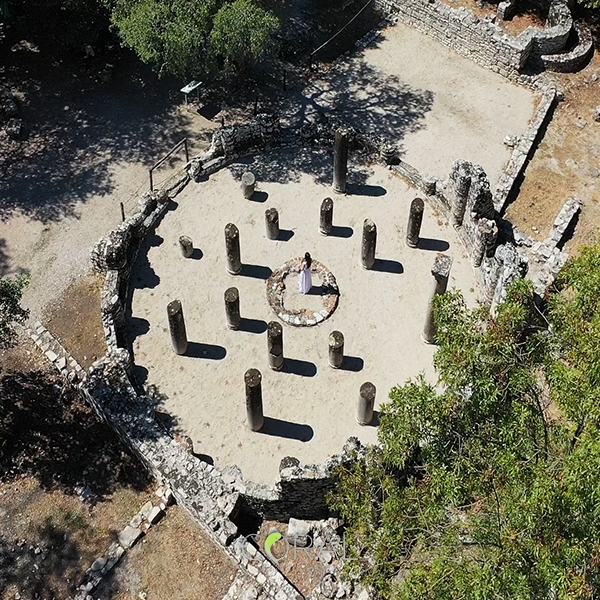History:
Butrint is a microcosm of Mediterranean history, representing in all its phases of development, the rise and fall of the great empires that dominated the region. What you see today is an amalgam of monuments representing a span of over two thousand years from the Hellenistic temple buildings of the 4th century BC to the Ottoman defenses created in the early 19th century. I According to classical mythology Buthrotum was founded by exiles fleeing the fall of Troy. On arrival, Priam’s son Helenus sacrificed an ox, which struggled ashore wounded and died on the beach. Taking this as a good omen, the place was named Buthrotum meaning “wounded ox”. Virgil’s epic poem, The Aeneid,’ recounts Aeneas visiting Butrint on his way to Italy. While there is evidence of settlement dating back to at least the 8th century BC on the acropolis, Butrint’s first substantial settlement took place in the 4th century BC with the creation of a healing sanctuary to the god Asclepius. The sanctuary was protected by solid fortified walls. Visitors would have travelled here to make offerings to the god, to seek a cure for illnesses and to attend ceremonies in the theatre.
With the rise of the Roman Empire, Butrint expanded to become a flourishing Mediterranean city. Monuments, like the theatre, were given a Roman aspect, and after Julius Caesar and Augustus founded a colony here the city was extended via a bridge and aqueduct, across the channel onto the plain beyond. The city would have covered an area of around 20 hectares, and public and private buildings of every kind were erected – temples, fountains, baths, and funerary monuments. In the 5th century the region suffered vandal raids, and the ordered life of the city changed dramatically.


Houses, often made of wood, were constructed in the remains of the classical buildings and people were sometimes buried within the city. In the late 5th century to the mid-6th century, we see the spread of Christianity at Butrint with the creation of numerous churches. At this time Butrint became the seat of a bishopric, and the Baptistery with its beautiful mosaic and the Great Basilica both date from this period. We know little about Butrint from the mid-7th century until the late 9th century. In 1081, the bay was a scene of a battle between the Norman and the Byzantine fleets and Butrint was seized by the Normans. During the 13th century Butrint thrived again. A castle was built on the acropolis and its fortification walls were repaired. In 1386, Butrint was bought by the Venetians and for four hundred years it became a military outpost of Venetian Corfu. Butrint was prized for its fish, cattle and plentiful forests. Eventually the acropolis castle was abandoned in 1572, and the garrison made its headquarters in the Triangular Castle on the south side of the river channel. By the 19th century, Butrint had become a small fishing village clustered around a castle. The settlement was governed by Ali Pasha, whose fame as a ruthless but skilful ruler of the region earned him the name “the Muslim Bonaparte”. Ali Pasha built the castle at the mouth of the river channel. From the late 18th century, foreign diplomats and grand tourists, such as Lord Byron, visited the region often as guests of Ali Pasha. The c1assical”ruins framed by mountains and wetlands were a delight to European painters, among them Edward Lear who visited in 1857.
In 1928, an Italian archaeological mission, headed by Luigi Maria Ugolini, came to Butrint and began modern archaeological investigations. Between 1928 and 1939, the Italian archaeological mission uncovered most of the grand public monuments that you see today. This work to excavate and interpret the city continued after the Second World War. The Butrint Foundation, a UK registered charity, was established in 1993.Since then the Albanian Institute of Archaeology and the Butrint Foundation have worked together to research, conserve and promote thesite. Butrint became a UNESCO World Heritage Site in 1992, a National Park in 2001 and a Ramsar Wetland Site of International Importance in 2003. The Park now measures 86 km2.

